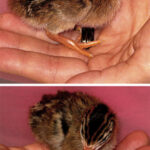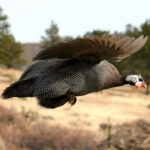Impatiens are beautiful and versatile bedding plants. An amazing number of varieties allow you to create your own favorite scheme.
Double impatiens look like small roses and single ones are best for mass planting.
Choose ‘Cheers’ with coral blooms and crinkly leaves; ‘Accent Stars’ with stripes or splashes of color on the leaves; ‘Wink and Blink’ with fluorescent colors and distinctive markings; or any of the larger New Guinea hybrids with variegated leaves.
Impatiens are amazingly versatile. You can plant them in a bed or a border, in any kind of container, and even in deep shade under trees.
Under a tree you could plant the ‘Sun and Shade series’ hybrids, in many colors, including bi-colors, and ‘Super Elfin’ hybrids, in vivid neon colors. Both provide strong highlights in the dark tree shade. Water well as tree roots may steal moisture from the little plants.
In hanging baskets Impatiens are ideas as they flower over a long period. Double-flowered ‘Tom Thumb’ hybrids mature quickly and spread widely.
In a terracotta pot, New Guinea Impatiens works well on their own, with their large, variegated leaves and bright flowers.
Set off mixed colors of Impatiens by surrounding them with single colors, such as white alyssum or Lobelia ‘Cambridge Blue.
White Impatiens, like the ‘Elfin White’ variety, are dazzling on their own, or set against dark green foliage. Bright colored Impatiens complements the variegated foliage of Wax Begonia to create an old-fashioned look.
Shades of red or fluorescent pink Impatiens come alive against the deep burgundy foliage of coleus, or partnered with other annuals of the same color mix, such as Petunias.
In mid to late spring, dig a hole large enough to accommodate the root ball of the seedling. Loosen the soil and dig in some garden compost.
Push the seedling out of its plastic cell. Loosen the root ball so that it can establish more easily, but do not lose too much soil.
Plant the seedling to the same level as I sat in the tray. Replace the soil and pat down, making sure the stem and roots are held firmly.
Water thoroughly. To conserve moisture and keep weeds down, place a mulch such as straw or pine bark around each seedling.
To save money, grow Impatiens the following year from cuttings. The New Guinea hybrids are best suited for this. Cut off healthy shoots in early autumn. Dip them in hormone rooting powder, and then plant them in a tray of growing medium, such as Perlite. You should be able to plant the new plants out the following spring.
When buying Impatiens, buy small seedling in a tray. Choose compact seedlings with deep green leaves. If at least one seedling is in bloom you can verify the color.
Avoid leggy plants with yellowing leaves and those that are fully in flower, they may be pot-bound.
Sun and shade suits this plant. Impatiens is one of the few annual bedding plants that tolerate even full shade under a tree. Be sure to keep it watered.
Well-drained soil is best. Adding compost or all-purpose fertilizer will also benefit your plants.
For fuller growth cut off the top third of your seedlings’ flowers with a pair of scissors immediately after planting.
Deadheading is not necessary as Impatiens are ‘self-cleaners’, old ones are continually replaced by new ones until cooler weather.
A few seasonal tips
Early spring: Sowing
The seeds are tiny and difficult to grow. Sow in a seed tray and thin out plants until only one is left per cell.
Late spring: Planting
Plant the seedlings you have bought or grown in the garden after the soil has warmed in late spring. Make sure you plant them in the early morning or in the evening. Avoid planting at midday because excess heat may stress the plants. Harden off seedlings for a day before planting.
Early autumn: Lifting
Impatiens will flower right until autumn. Dig up and discard them, or add them to your compost heap,
Impatiens are easy care plants, resistant to most diseases and unappealing to animals and insects. They are, however, seriously affected by lack of water. If you are too busy to water them, consider a drip watering system.






